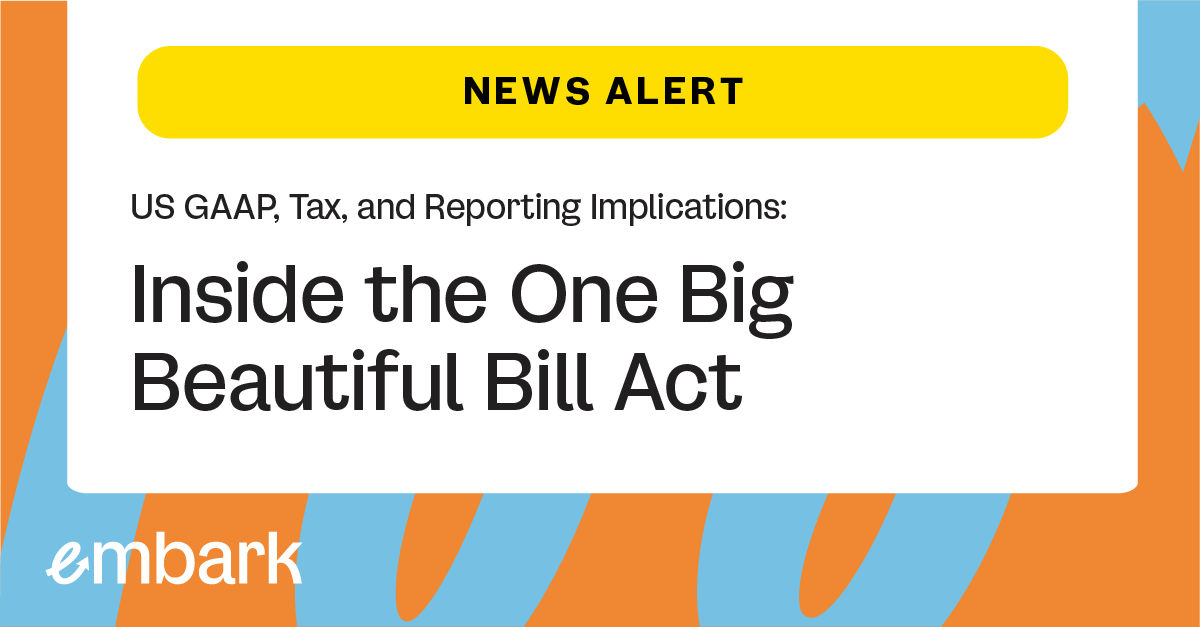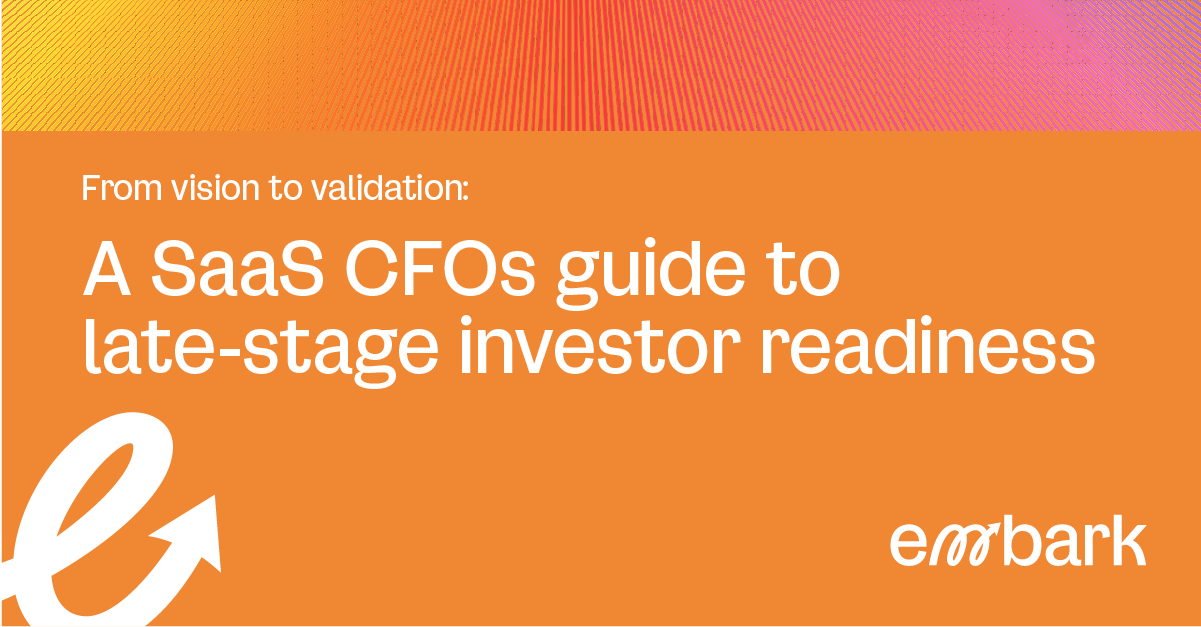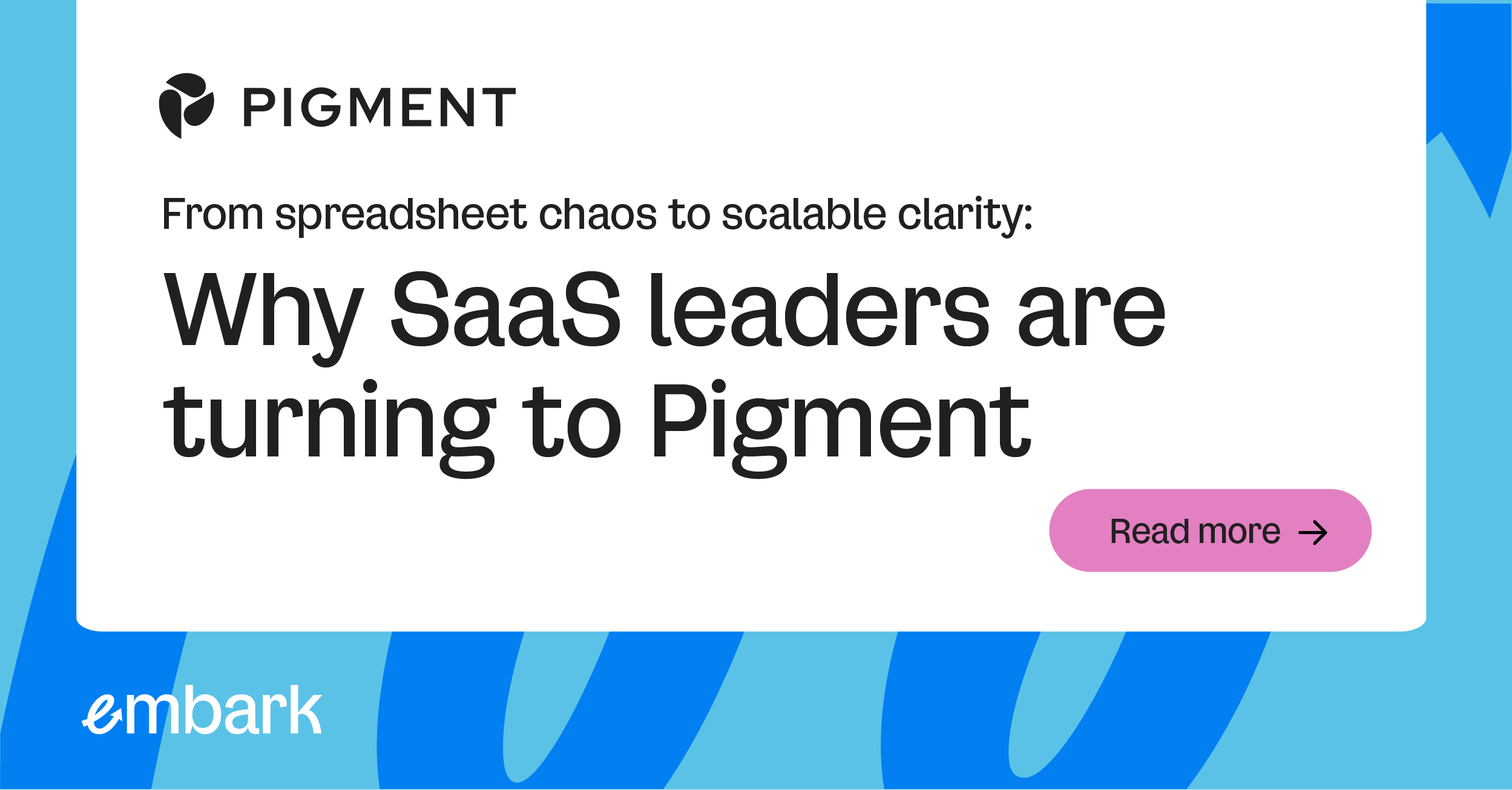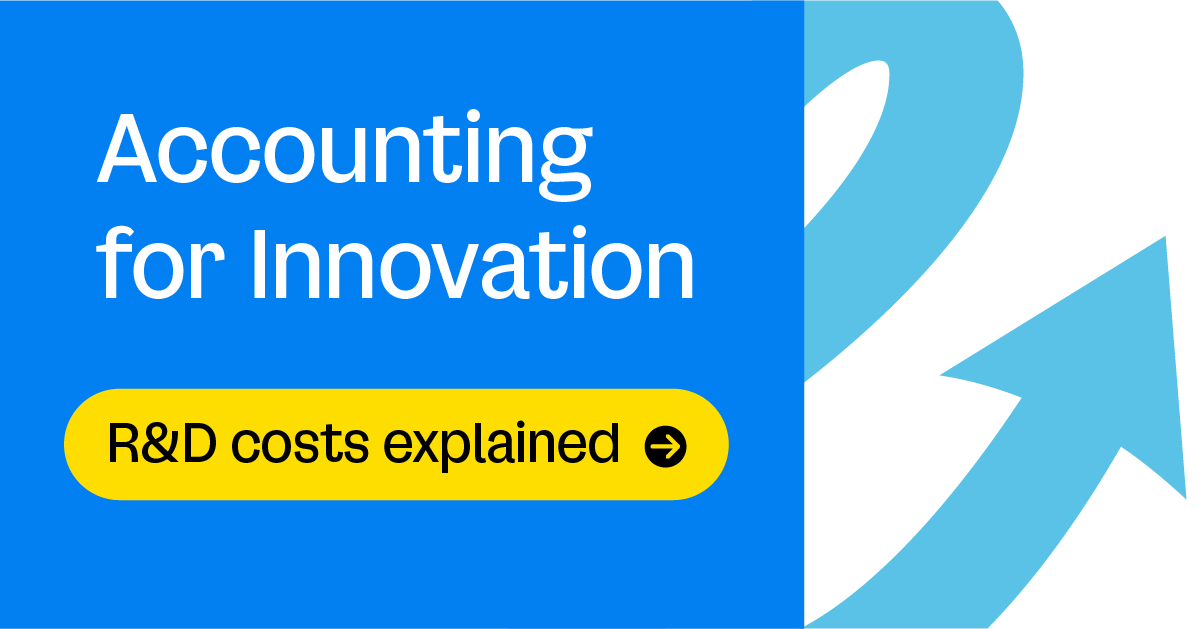
Research and development (R&D) is a driving force behind innovation across industries — from biotech breakthroughs to cutting-edge software. But while the outcomes of R&D can transform markets, accounting for these costs often presents significant complexity. Questions around capitalization, practical implementation, and evolving standards make this an area where finance teams must tread carefully.
In this post, we explore the key principles of R&D accounting under U.S. GAAP, common challenges, and important considerations for businesses seeking to accurately reflect their innovation investments in financial reporting.
What Qualifies as R&D? A Closer Look at the Scope
When it comes to R&D, accounting isn’t just about tracking lab coats and prototypes—it’s about applying clear technical guidance to determine what qualifies, what doesn’t, and how to reflect those activities in the financials. The authoritative standard here is ASC 730, Research and Development, which defines the scope and treatment of R&D costs under U.S. GAAP.
At a high level, ASC 730 requires that all R&D costs be expensed as incurred. But determining what falls under R&D starts with a clear understanding of the activities involved and whether they meet the definition under the standard.
The Building Blocks of R&D
ASC 730 differentiates between research and development, but both fall under the same accounting treatment—expense as incurred.
- Research: This involves the planned search for new knowledge. Think laboratory studies, hypothesis testing, or other investigative work that pushes the boundaries of current understanding.
- Development: This is where that new knowledge gets translated into actionable outcomes—designs, prototypes, pilot plants, or significantly improved products or processes.
Both activities must be aimed at developing or significantly improving a product, process, or service intended for sale or internal use.
ASC 730 Applies Broadly—but Not Universally
All entities are subject to the scope of ASC 730, but not all innovation-related activities qualify. Here’s a breakdown of what is generally included and excluded:
Activities Included in R&D |
|
✅ Discovery efforts: Laboratory research aimed at uncovering new knowledge. |
|
✅ Concept development: Formulating potential products or processes. |
|
✅ Testing and evaluation: Testing alternatives to determine viability. |
|
✅ Prototype development: Design, construction, and testing of models. |
|
✅ Pilot plants: Operating at a scale not yet economically feasible for commercial production. |
|
✅ Regulatory support: Activities required to obtain approval (e.g., clinical trials, FDA submissions). |
|
✅ New tooling: Designing jigs, molds, and dies involving new technology. |
|
✅ Engineering: Work needed to achieve a commercially viable product that meets specific functional and economic specs. |
Activities Excluded from R&D |
|
Engineering follow-through or scale-up in early production phases |
|
Routine quality control and product testing |
|
Trouble-shooting manufacturing issues |
|
Seasonal or routine product modifications |
|
Internal-use software development (covered under ASC 350-40) |
|
Process improvement for administrative or selling functions |
|
Market research or consumer testing |
|
R&D performed under contract for others (reimbursed projects) |
|
Patent/legal work related to IP licensing or defense |
|
Facility construction (unless specific to a pilot plant or R&D-only use) |
These exclusions are crucial. For example, if a company spends heavily to adapt a product to a single customer’s specs, it may feel innovative—but under ASC 730, that’s not R&D. Similarly, building out manufacturing infrastructure or legal support around IP protection doesn’t qualify, even if tightly linked to a development project.
Breaking Down R&D Costs: Expense, Capitalize, and Everything In Between
Once an activity meets the definition of research and development under ASC 730, the focus shifts to the associated costs—and how they should be treated in the financials. While the overarching rule is that R&D costs are expensed as incurred, the underlying components of those costs—and a few notable exceptions—require thoughtful consideration.
Materials, Equipment, and Facilities
One of the more nuanced areas involves tangible assets like test equipment, supplies, and pilot plants. The accounting treatment hinges on whether those assets have what’s referred to as alternative future use.
If an entity acquires or constructs a tangible asset for use in R&D, but it has no alternative use beyond the specific project it was built for, the cost is expensed immediately. For example, if a company builds a prototype rig solely for one experimental drug trial, and that rig can’t be used for anything else, those costs are R&D expenses.
On the other hand, if that same rig is capable of being used across future development efforts or in commercial production—even if that use hasn’t yet begun—its cost should be capitalized and accounted for under general property, plant, and equipment guidance (ASC 360). In this case, its depreciation becomes part of the R&D cost in periods when the asset is actually used in R&D.
It’s important to note that when tangible assets are acquired as part of a business combination, they’re capitalized at fair value regardless of whether they have an alternative use. That’s one of the few carve-outs from the general expense rule under ASC 730.
Personnel Costs
R&D often lives and dies by the people behind it—scientists, engineers, designers, developers, and countless supporting roles. Salaries, wages, and other compensation (including stock-based comp) for employees directly involved in R&D activities must be expensed as incurred. This includes time spent designing prototypes, conducting lab experiments, developing new product code, or managing clinical trials.
It’s also worth flagging that, unlike the guidance for software development costs under ASC 985-20, there is no concept of "technological feasibility" under ASC 730 that would allow for capitalization of internal development costs. Even if the end product is technologically viable, personnel costs tied to R&D activities remain expenses.
Intangible Assets and In-Process R&D (IPR&D)
R&D projects often rely on intellectual property—licensed technologies, drug compounds, or in-process development rights acquired from third parties. How these costs are handled depends heavily on how the asset was acquired.
If an intangible is acquired through a business combination, it is capitalized at fair value and recorded as an indefinite-lived intangible asset. It stays on the balance sheet until the related project is either completed (at which point amortization begins) or abandoned (triggering impairment).
However, if that same intangible asset is acquired through an asset acquisition, the entity must assess whether it has alternative future use. If it does not—meaning it will only be used in a specific, already-commenced R&D project—the cost is expensed immediately. There’s no presumption that intangibles have alternative use, unlike the general treatment of tangible assets. Companies need to carefully consider whether the intangible can be deployed in other identifiable projects or contexts.
Examples where there is no alternative use include:
-
IP that can only be used in the current project, and all future uses are contingent on its success
-
Defensive IP used solely to block competitors during current development
-
Situations where the only identifiable future projects have already commenced
Contracted R&D Services
Many companies outsource portions of their R&D efforts—whether that’s engaging a contract research organization, partnering with a university, or hiring consultants to support prototype design. These costs, when clearly associated with R&D activities, are expensed as incurred. The nature of the relationship doesn’t change the treatment—if the third party is performing R&D on behalf of the entity, the cost belongs in R&D expense.
This also extends to cost reimbursement arrangements. Even if the work is performed externally, it should be evaluated under ASC 730 based on whether the entity bears the R&D risk and retains rights to the output.
Indirect Costs
Indirect costs often get overlooked, but they can make up a significant portion of R&D spend. These include shared utilities, depreciation on multi-purpose assets, occupancy costs, and administrative support costs that are clearly connected to R&D activities. Under ASC 730, companies must adopt a reasonable methodology to allocate these costs and include them in R&D expense.
However, not all overhead qualifies. General and administrative costs that are not clearly related to R&D—such as executive management, legal functions, or unrelated HR activities—should be excluded from R&D and treated as SG&A.
R&D Funding Arrangements: Navigating the Accounting Complexity
For many innovative companies, the cost of research and development (R&D) can be substantial—and often, external funding is essential to push those efforts forward. But while these arrangements might unlock crucial resources for development, they also introduce a host of accounting considerations. There is no "one-size-fits-all" approach. Each R&D funding structure must be evaluated carefully under U.S. GAAP to determine whether the arrangement represents an obligation to repay or a contract to perform R&D services for others.
Understanding the Spectrum of R&D Funding Models
R&D funding arrangements exist along a broad spectrum. On one end, a company might receive what is effectively a loan for its R&D activities—funding that it’s obligated to repay regardless of the outcome. On the other end, a company may receive financing with no repayment obligation unless the R&D succeeds, signaling that the risk of failure has been transferred to the investor. Between those extremes are hybrid models, often layered with equity instruments, milestone payments, call options, or royalties.
These arrangements can involve direct funding, where the investor provides capital to the reporting entity, or structured funding via a new legal entity formed specifically to house the R&D activities. In either case, the appropriate accounting model must be determined by analyzing the substance of the arrangement—particularly the allocation of financial risk.
ASC 730-20 vs. ASC 470-10: Which Guidance Applies?
Two main accounting frameworks may apply to R&D funding arrangements:
- ASC 730-20, which applies to arrangements where a reporting entity performs R&D funded by others and can retain or obtain the results.
- ASC 470-10, which addresses sales of future revenues and debt-like arrangements.
The key distinction between these two lies in who bears the risk. If the reporting entity is obligated to repay the funding regardless of the outcome of the R&D, then the arrangement should be accounted for as debt under ASC 470-10. Conversely, if repayment is contingent solely on the successful outcome of the R&D, then ASC 730-20 may apply, and the funds are accounted for as payments received to perform R&D services.
If there is a substantive and genuine transfer of R&D risk—meaning the investor stands to lose their funding if the R&D fails—then ASC 730-20 typically results in recognizing the arrangement as a service contract. If that risk transfer does not occur, the arrangement is a borrowing, and the obligation to repay must be recorded.
When Risk Transfer Isn’t Substantive
Even if a contract does not explicitly require repayment, indicators may exist that suggest repayment is effectively guaranteed. ASC 730-20 outlines examples that trigger a presumption of repayment:
- The entity intends to repay the funds regardless of outcome.
- There is a severe economic penalty for non-repayment.
- There is a significant related party relationship.
- The R&D project is essentially complete at the inception of the arrangement.
In these cases, the arrangement is likely a borrowing under ASC 470, and the proceeds received are treated as debt, often accounted for using the effective interest method.
Structured R&D Vehicles and Consolidation Considerations
When R&D arrangements involve a newly formed legal entity (e.g., a limited partnership or LLC), the reporting entity must assess whether it has a controlling interest in that entity. If so, it may need to consolidate the R&D vehicle under ASC 810 using the variable interest entity (VIE) model or other consolidation models depending on the nature of the relationship.
How to Account for Repayable vs. Non-Repayable Funding
If the arrangement is a borrowing:
- Record the proceeds received as a liability.
- Expense the R&D costs as incurred.
- Use the effective interest method to recognize interest over time (or elect the fair value option).
If the arrangement represents a service contract:
- Evaluate whether the arrangement falls under ASC 606 (revenue from contracts with customers) or ASC 808 (collaborative arrangements).
- Recognize the funding as income, which could be presented as other income, revenue, or a reduction of R&D expense, depending on facts and circumstances.
Hybrid Instruments and Equity Considerations
Some arrangements include equity or debt instruments issued alongside the R&D agreement. These instruments must be valued separately and accounted for under other applicable guidance (e.g., ASC 480, ASC 815, ASC 505). If issued in contemplation of the R&D arrangement, the contracts are combined and evaluated together.
In some cases, nonrefundable advance payments are made for future R&D services. These payments are capitalized and expensed as services are performed.
Disclosure Expectations – What Users Want to Know
Accounting for R&D costs is just one part of the equation—disclosing them effectively is equally critical. Under U.S. GAAP and SEC requirements, companies must provide transparent, decision-useful information about their R&D activities and related funding arrangements. Investors, regulators, and analysts alike want to understand not only how much a company is spending on innovation, but also how those efforts align with strategic priorities, risk profiles, and potential future returns.
Baseline Disclosure Requirements
At a minimum, all entities are required to disclose total R&D expenses for each period an income statement is presented. This foundational requirement helps users of the financial statements gauge the level of investment being made in future-oriented growth. Companies should also consider whether R&D meets the threshold for critical accounting policies, which would warrant additional qualitative disclosure about judgments, estimates, and methodologies.
For SEC registrants, the requirements go further. Under Item 303(b) of Regulation S-K, Management’s Discussion and Analysis (MD&A) must address any material changes in results of operations, including R&D expense fluctuations. The SEC encourages registrants to provide meaningful disaggregation in these disclosures—breaking down R&D costs by product line, project, or nature of the expense (e.g., internal vs. external spend). In recent years, comment letters have frequently pushed companies to provide greater transparency in this area, especially when R&D spending trends materially shift or diverge from prior periods.
IPR&D and Asset Acquisition Disclosures
When a company acquires in-process research and development (IPR&D) assets in an asset acquisition and writes them off during the period, those amounts—and the corresponding income statement line item—must be disclosed under ASC 350. If the IPR&D asset instead has an alternative future use, it remains capitalized and subject to the general disclosure requirements for intangible assets. As with other intangibles, disclosures should cover amortization methods, useful lives, and any impairment considerations.
Disclosure for R&D Funding Arrangements
Disclosures related to R&D funding arrangements depend largely on the accounting model applied.
If the arrangement is accounted for as a contract to perform R&D for others under ASC 730-20, the reporting entity must disclose:
- The terms of significant agreements, including royalties, licenses, purchase options, and additional funding commitments;
- The amount of compensation earned and costs incurred under each arrangement during the period; and
- Any related party relationships, in accordance with ASC 850.
Companies may aggregate similar arrangements for disclosure purposes, provided that doing so does not obscure material information.
If, however, the arrangement is accounted for as a repayment obligation (i.e., borrowing), specific disclosure requirements under other standards come into play.
What’s Next – Is a Change in GAAP on the Horizon?
While ASC 730 has long governed the treatment of R&D costs under U.S. GAAP, change may be on the horizon. The FASB is currently exploring this area through its research project on the recognition of intangibles, which includes a focus on internally generated intangible assets—particularly R&D.
In its December 2024 Invitation to Comment on this topic, the FASB noted increasing stakeholder interest in reconsidering the blanket expensing model for R&D. Many observers believe that the current guidance may understate the value of innovation-intensive companies, especially in sectors like technology and life sciences. The board is actively evaluating whether certain development-phase costs should be eligible for capitalization, aligning more closely with IFRS and modernizing financial reporting in a knowledge-based economy.
The FASB’s ongoing research signals that updates to ASC 730—or the creation of new guidance for internal intangibles—could eventually reshape how companies account for and disclose their innovation investments. While no formal standard-setting project has been added to the technical agenda yet, companies should stay tuned as discussions evolve. If the expensing model changes, the impact could be significant—not only on income statement presentation, but also on key metrics like EBITDA, book value, and deferred tax positions.
Best Practices for Life Sciences and Biotech Companies
For life sciences and biotech companies, the intersection of complex development cycles, regulatory hurdles, and technical accounting requirements creates a uniquely challenging environment for finance teams. In these innovation-heavy sectors, research and development is not just a cost—it’s the core of the business model. As a result, accounting teams must be well-equipped to evaluate the nuances of costs, funding arrangements, and financial reporting.
Key best practices and considerations include:
- Careful cost classification Many costs in the life sciences sector live in a gray area between R&D and selling, general, and administrative (SG&A). Activities such as Phase IV studies, investigator-initiated research (IIR), medical education grants, pharmacovigilance, and medical science liaison (MSL) functions often require significant judgment to determine whether they meet the definition of R&D under ASC 730. Teams must assess whether these activities contribute meaningfully to new knowledge or future product development—or if they are primarily post-marketing or promotional in nature.
- Capitalization of prelaunch inventory Life sciences companies may begin manufacturing product before regulatory approval to meet anticipated demand. Capitalizing such costs requires careful evaluation of whether the prelaunch inventory represents a present right to an economic benefit, considering factors such as regulatory risk, legal challenges, and the company’s historical approval success. Finance teams must continuously reassess capitalization as facts evolve.
- PRV (Priority Review Voucher) accounting When acquired, PRVs may qualify as assets or R&D expense depending on their intended use. If the company plans to use the voucher to expedite internal development, it may not meet the asset definition due to lack of alternative use. If the intent is resale, however, the PRV may represent a tangible economic benefit. Sale transactions involving PRVs must also be assessed under ASC 606 or ASC 610-20 to determine appropriate revenue recognition.
- Clinical trial materials and raw materials Determining whether to expense or capitalize materials used in clinical trials depends on alternative use. Raw materials purchased for a single-use drug candidate that cannot be used elsewhere should be expensed as R&D. However, if materials can support multiple drugs or trials, they may be eligible for capitalization as inventory.
- Evaluating complex R&D funding arrangements Life sciences entities frequently engage in milestone-based collaborations, upfront license payments, and structured development partnerships. These arrangements often involve contingent rights and require judgments around revenue recognition (ASC 606), collaboration accounting (ASC 808), or debt classification (ASC 470). Early involvement from technical accounting professionals is essential to avoid misstatements.
- Ongoing reassessment of asset status Once costs are capitalized—whether related to prelaunch inventory or IPR&D—companies must monitor for impairment or changes in regulatory or commercial viability. A failed clinical trial or adverse regulatory development could trigger impairment or reclassification.
- SEC disclosure and MD&A focus Given the prominence of R&D spend and its impact on valuation, the SEC has increasingly scrutinized how life sciences companies present and explain their innovation investments. Finance teams should be prepared to disaggregate R&D expense (e.g., by program, by stage, or by internal vs. external spend) and highlight material changes in MD&A.
In a sector where timelines are long, risks are high, and accounting judgments abound, getting R&D accounting right isn’t just compliance—it’s critical to telling the right story to investors, analysts, and regulators. Life sciences finance leaders must navigate these issues with rigor, cross-functional coordination, and an eye toward evolving guidance from both FASB and the SEC.
Final Thoughts: Accounting for Innovation, Done Right
R&D is the heartbeat of innovation—but accounting for it is anything but simple. Between complex cost classifications and high-stakes funding structures, getting it right takes more than check-the-box compliance.
At Embark, we help companies navigate these complexities with confidence—whether you're tackling biotech breakthroughs, scaling software development, or preparing for your next audit or transaction. From technical accounting to strategic disclosures, we bring clarity to your innovation story.
Let’s talk about how Embark can support your R&D accounting and financial reporting needs—today and as the guidance evolves.






